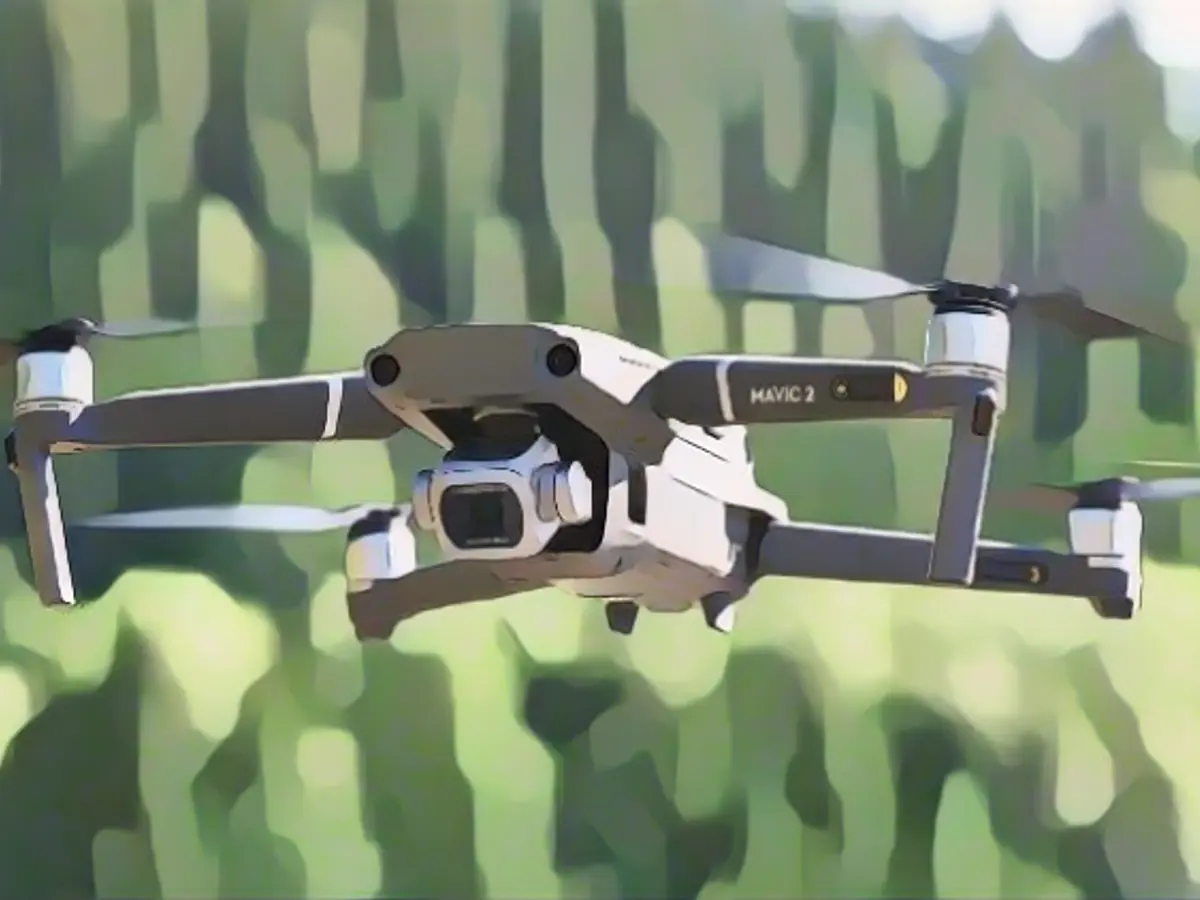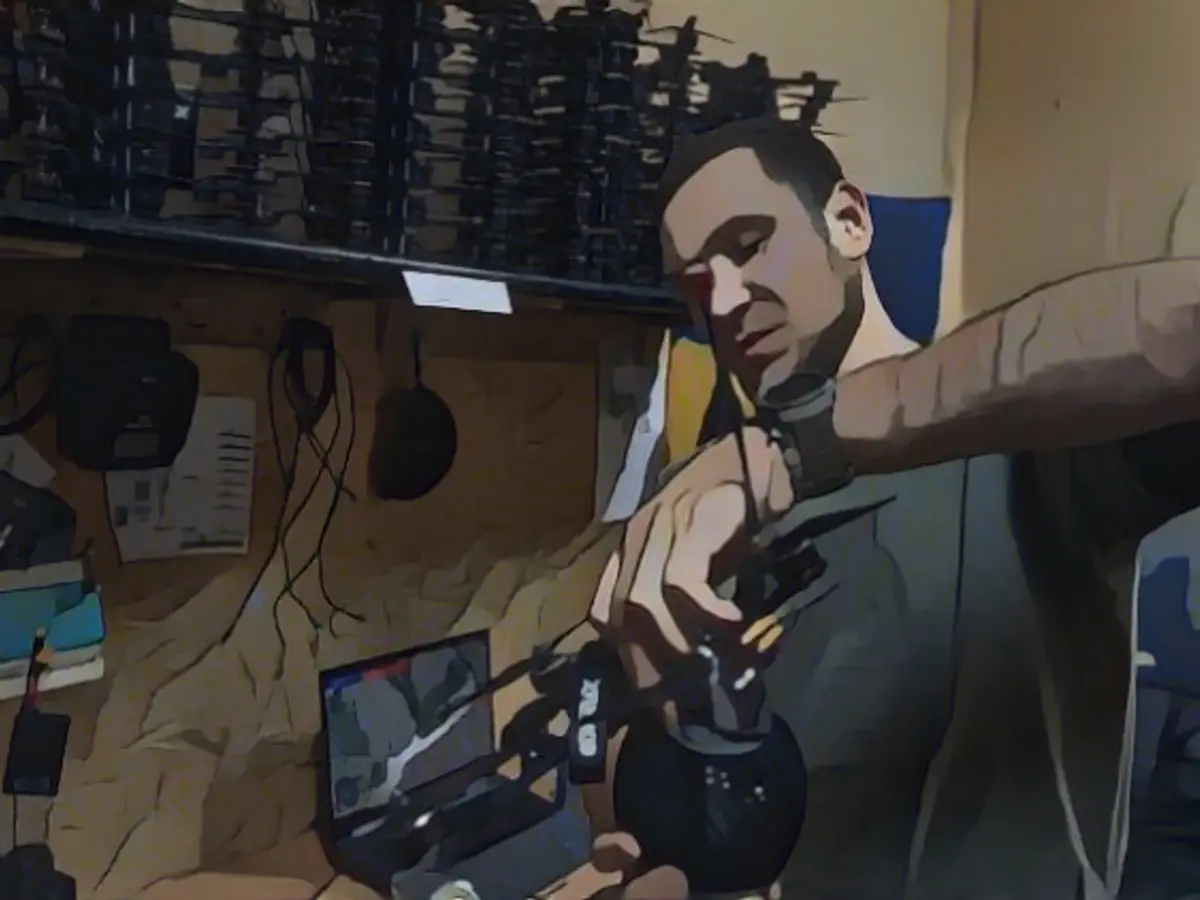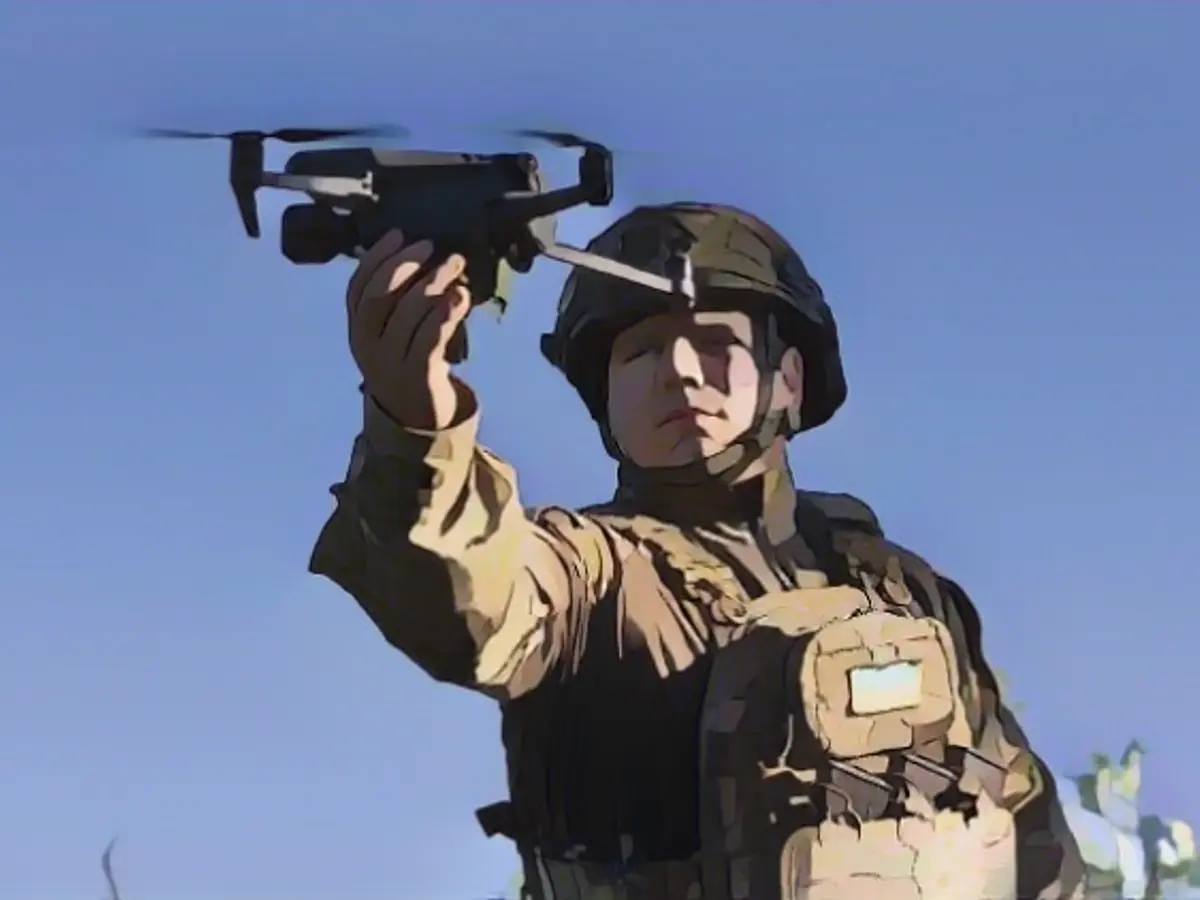Drone warfare is constantly being reinvented in Ukraine
Aerial drones play a decisive role on the Ukrainian front; never before have more been used in a war. At a conference, pilots, manufacturers and political representatives discuss current developments and take a look into the future. The critical role of China is also a topic.
Aerial drones are omnipresent on the Ukrainian front. How many there are can only be estimated. The Royal United Services Institute (RUSI) estimated in May that Ukraine loses around 10,000 of the copters per month. This gives a rough idea of the number, writes military expert Ulrike Franke in an article for the European Council on Foreign Relations. Never before have so many drones been used in a military conflict.

The aircraft are changing the nature of warfare, and development is progressing rapidly. Drone pilots, manufacturers and defense politicians and experts discussed the current state of affairs, especially from a Ukrainian perspective, in Warsaw. The event was organized by the US Defence Innovation Unit and Brave1, which work for the Ukrainian and US governments on the military implementation of commercial innovations. The results of the conference were compiled by the Center for Security and Emerging Technology (CSET).
Focus on low-cost FPV drones
Many different drones are in use in Ukraine on land, at sea and in the air. However, the conference focused on quadro and multicopters, which are controlled via first-person view (FPV) cameras. There is a good reason for this: they are small, light, inexpensive and relatively easy to operate.
Drones play a central role in reconnaissance and surveillance in Ukraine. They are often used to control artillery fire. Increasingly, however, they are also "hunting" enemy targets by dropping simple bombs or carrying out "kamikaze attacks" with explosive devices at the tip.

A typical FPV drone "weighs up to one kilogram, has four small motors, a battery, a frame and a camera that is wirelessly connected to goggles worn by a pilot who controls it remotely. It can carry up to 2.5 kilograms of explosives and hit a target at a speed of up to 150 kilometers per hour,""Politico" quotes Pavlo Tsybenko, director of the Dronarium military academy near Kiev.
Anyone can learn it quickly
High-quality commercial drones, such as the DJI Mavic 3, which costs around 3,000 euros, are rarely used for "kamikaze attacks". Instead, according to a blog post by the Kennan Institute, the simplest copters are used, which cost no more than 500 euros. Nevertheless, they can destroy a tank or other military equipment worth millions.
And practically anyone can learn how it works. "The basic training to become a drone pilot takes five days. Learning how to control a kamikaze drone takes more than 20 days," says Tsybenko. However, the use of FPV drones is never a one-man operation. At its simplest, a pilot controls a single copter with the support of a small team. According to CSET, there was talk of up to 3,000 Ukrainian drone units at the conference.
Teamwork
In addition to the FPV pilot, a team can include an observer (spotter) who maintains eye contact with the drone, a higher-flying copter that maintains an overview and a reconnaissance drone with personnel to determine the target. The larger the team, the more important communication becomes. In the simplest case, according to the CSET, this can take place via encrypted messenger messages. Otherwise, Ukrainian systems are used to monitor the battlefield in real time: Kropyva or the more complex Delta.
According to CSET, the Ukrainian armed forces have also started to deploy drone units, with each copter having its own pilot. On the one hand, this can have a psychological effect on the enemy, who take cover in panic at the sound of the approaching aircraft. On the other hand, it is intended to confuse or overwhelm the enemy's defenses. Occasionally, the drones in a unit also have different capabilities, including infrared cameras or optoelectronic equipment.
High losses due to friendly fire

New capabilities are also required to circumvent electronic warfare (EW). To this end, the Ukrainian military is increasingly looking for drones with optical or inertial navigation, among other things. They are largely immune to electromagnetic radiation from jamming transmitters (jammers).
However, according to the conference participants, drone losses are also high for reasons other than EW. Inexperienced pilots often lose control and low-cost copters have almost no jamming protection and are therefore easy targets. In order to use them at all, their software had to be manipulated to prevent updates from the manufacturer that would render them unusable. In addition, the batteries of cheap drones explode quite frequently and the devices are so loud that they are easily detected.
Interestingly, one conference participant estimated that half of the drones are taken out of the sky by their own troops. With copters being used en masse by both, it is difficult to distinguish between friend and foe. According to the Kennan Institute, the average survival time of a drone on the front line is only three days.
Rapid but chaotic development

The development is progressing so rapidly that drones that worked on the battlefield just three months ago are now no longer usable, said several conference participants. Within a year, the number of domestic manufacturers is said to have grown from seven to 200, with dozens of companies having signed contracts with the government in Kiev.
The development and testing of drones by manufacturers often takes place directly on the front line, writes CSET. Company representatives said that the knowledge gained in this way was essential. Apparently addressing foreign manufacturers, one speaker said: "It will take years before you can test in your country. We can do in three days what NATO can do in three months or three years."
So far, however, this development has hardly been coordinated, as can be seen from the numerous privately organized fundraising campaigns to purchase drones for individual Ukrainian units. In contrast, it is assumed that the Russian armed forces are using their drones connected via digital platforms, according to CSET. This makes the enemy systems faster and less susceptible to human error. Brave1 was presumably created to make the use of drones more efficient, from development, purchasing and production to deployment on the front line.
Everyone wants DJI drones
One conference participant stated that Ukraine had spent 25 percent of its war budget on drones. However, this was apparently for more sophisticated systems and not for low-cost copters, which are preferred according to CSET. In particular, the drones in question are from DJI.
One reason for this is that the Chinese manufacturer offers technically outstanding but easy-to-operate models for less than 10,000 dollars. In addition, contracts with DJI are concluded within a few days, whereas this can take months with European providers, said conference participants.
Trade restrictions, lack of standards, bureaucracy
Conversely, US companies complained at the conference about bureaucracy, a lack of allied standards and a lack of protection for intellectual property. For example, one representative stated that he had waited almost six months for a contract. When the drones were then delivered within a few weeks, the Ukrainian side complained about the delay in receiving them. The clients had not known about the delay in concluding the contract.
On the allied side, the US classification of drones as "dual-use" poses a problem. These are goods that can be used for both civilian and military purposes and are therefore subject to trade restrictions. Companies would also have to fear losing investments, as there is no guarantee that drones developed for Ukraine will be marketable in other NATO countries due to a lack of standards, writes CSET. If they were to test copters on the front line, they would also have to fear that technical secrets would be revealed.
China dominates the market
This creates a dangerous dependency on China. The import of drones and components is made more difficult by trade restrictions imposed by Beijing. Among other things, the export of civilian drones for military use has been prohibited since September 1.
This does not make purchasing impossible, but it does make it more complicated. Chinese companies, for example, demanded the use of complicated intermediary networks similar to those used by Russia to circumvent American and European export controls, writes theNew York Times.
However, Ukraine has already had to purchase through European intermediaries, while Russia was served directly. DJI, which dominates the global market with a share of around 70 percent, already restricted its sales to the warring parties in April 2022, which is why the particularly popular and mass-produced Mavic drones have been procured mainly through private campaigns ever since.
There are similar problems with the procurement of components. "Even if you see labels like 'America' or 'Australia' on a component, everything is still made in China," says Ukrainian drone entrepreneur Oleksii Kolesnyk to the New York Times. "It's almost impossible to create something that could effectively replace China." And the demand is enormous; Ukraine is said to need up to 30,000 FPV drones per month.
The use of drones in Ukraine's conflict has increased significantly, surpassing previous records for military conflicts. According to Ulrike Franke's article for the European Council on Foreign Relations, Ukraine loses approximately 10,000 drones per month (Education: Estimate, Ukraine).
In Warsaw, a conference was held to discuss the use of drones in the Ukrainian conflict, with representatives from various stakeholders, including the US Defense Innovation Unit and Brave1 (Ukraine, Attacks on Ukraine, Wars and conflicts).
Source: www.ntv.de







